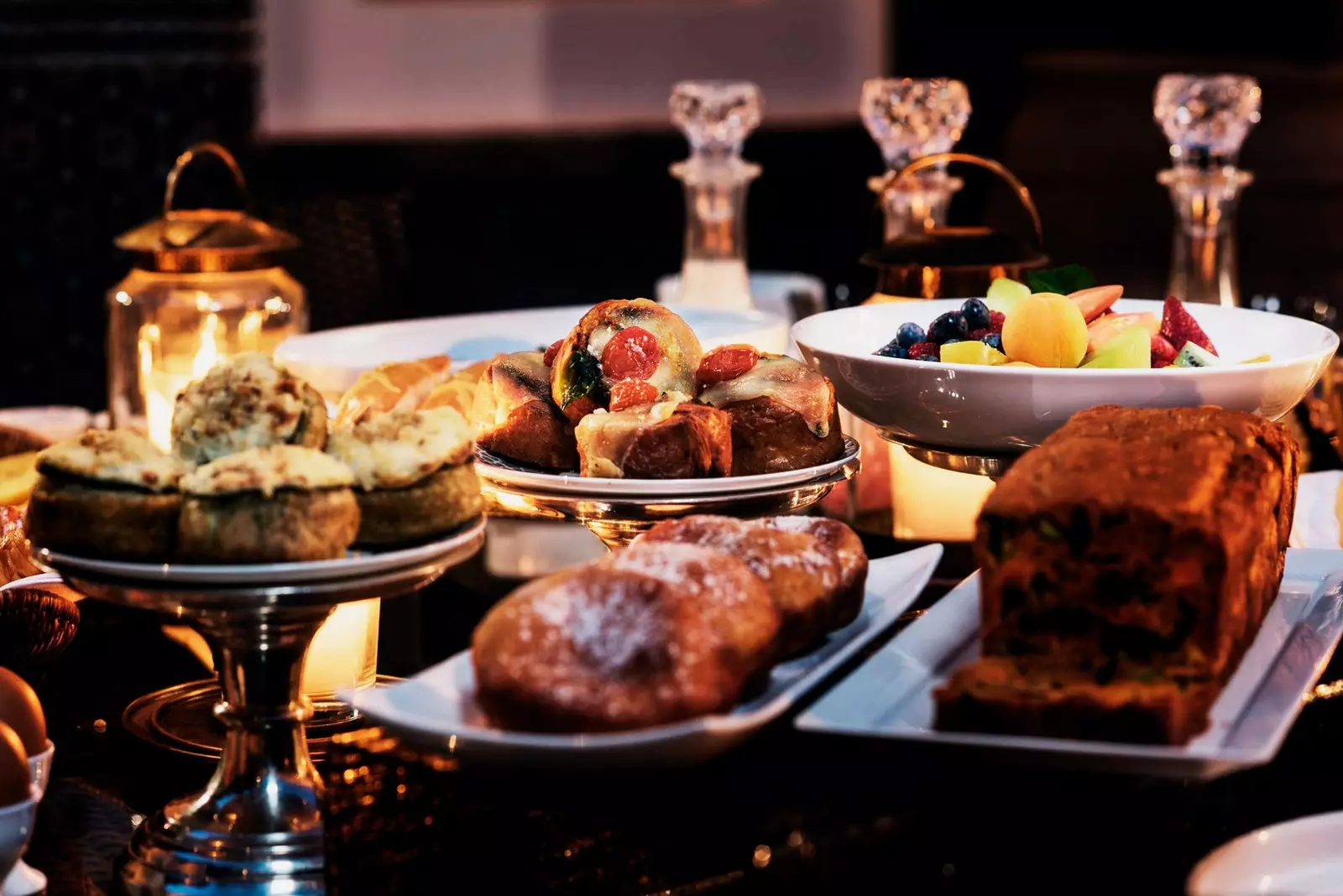
What a feast, great feast!
The land of God of the Berbers, the walled imperial fortress that served as a bastion for the caravan routes to Black Africa, the pink city of Moorish tales and legends , the playground of sultans and emirs , the retreat and rest of kings...
Marrakesh evokes all the exoticism of Africa and, at the same time, feels very close, almost European. This city is **geographical crossroads between the desert, the Atlas Mountains ** and the Atlantic coast, but it is also a meeting point for different ethnic groups and cultures.
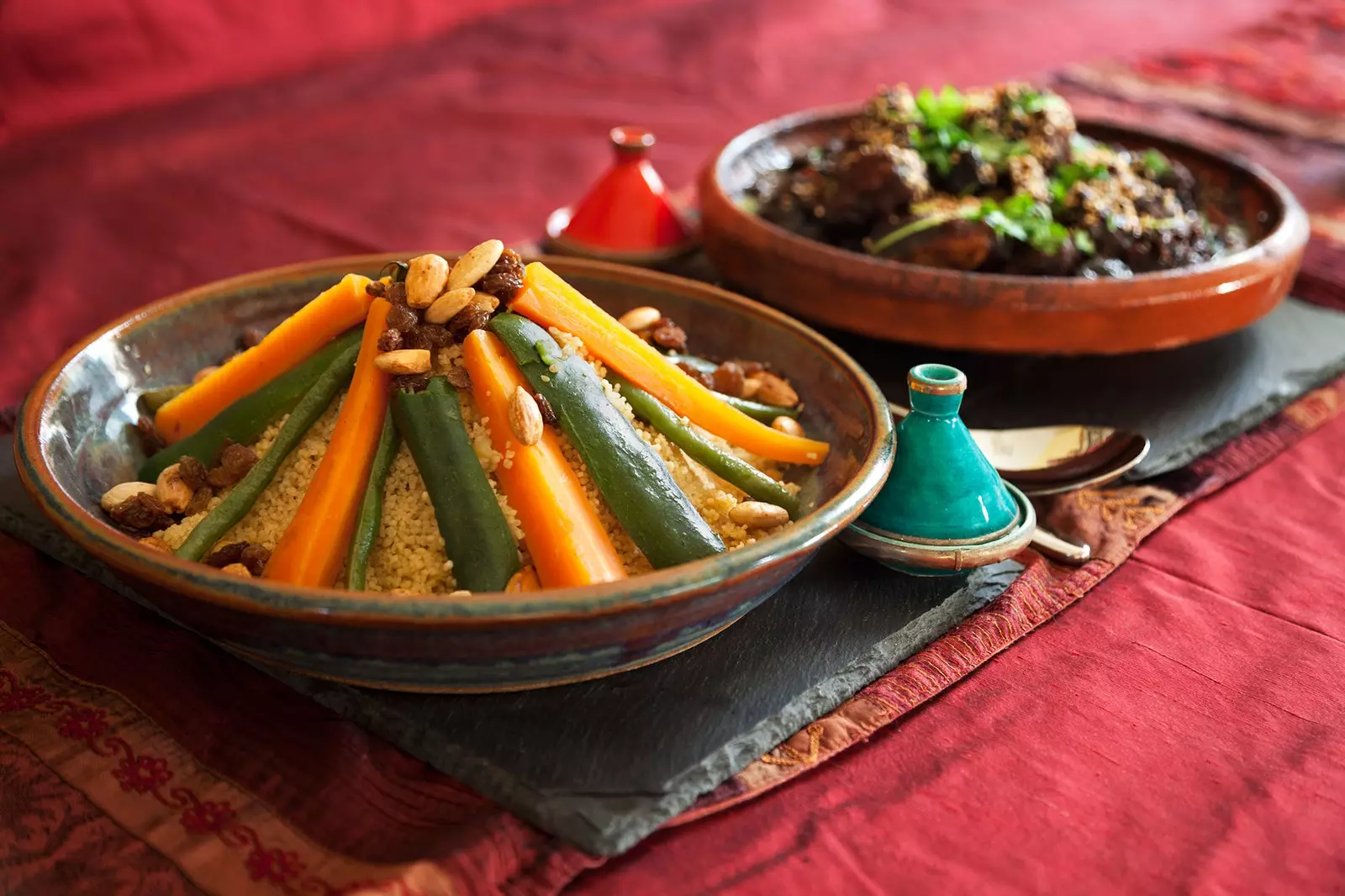
We love couscous, but beware, there is more, much more
From the dominant Alaouite to the Berber tribes, passing through a myriad of expatriates who found in it a refuge and an exotic paradise. The french occupation left a solid cultural legacy that still endures and the successive waves of artists and intellectuals gave the city an air bohemian and festive.
However, and despite the influences, in the gastronomic field , Marrakesh had remained, until now, faithful to its traditions . The enormous wealth of moroccan cuisine It has manifested itself mainly inside houses, where women, traditionally the cooks, prepare authentic feasts usually linked to Muslim religious and family festivities.
But his gastronomic offer facing the public it was very small and somewhat monotonous . We all know –and love– harira, couscous, pigeon pie or chicken or lamb tagines, but there is a world beyond Moroccan cuisine.
The depth of its gastronomy , the subtlety in its use of spices and the sumptuousness, which until now had been confined to homes, begin to see the light and show themselves to the visitor.
The revival of the riads of the medina , those marvelous mansions vetoed until a few decades ago to the outside eye, and their conversion into small luxury hotels with an increasingly sophisticated offer – let us think, for example, that ** Royal Mansou r ** delegated its kitchens to Yannick Alleno , a three-star Parisian–, as well as the arrival of the large hotels in the Palmeral, have made Marrakech live a small gastronomic boom.
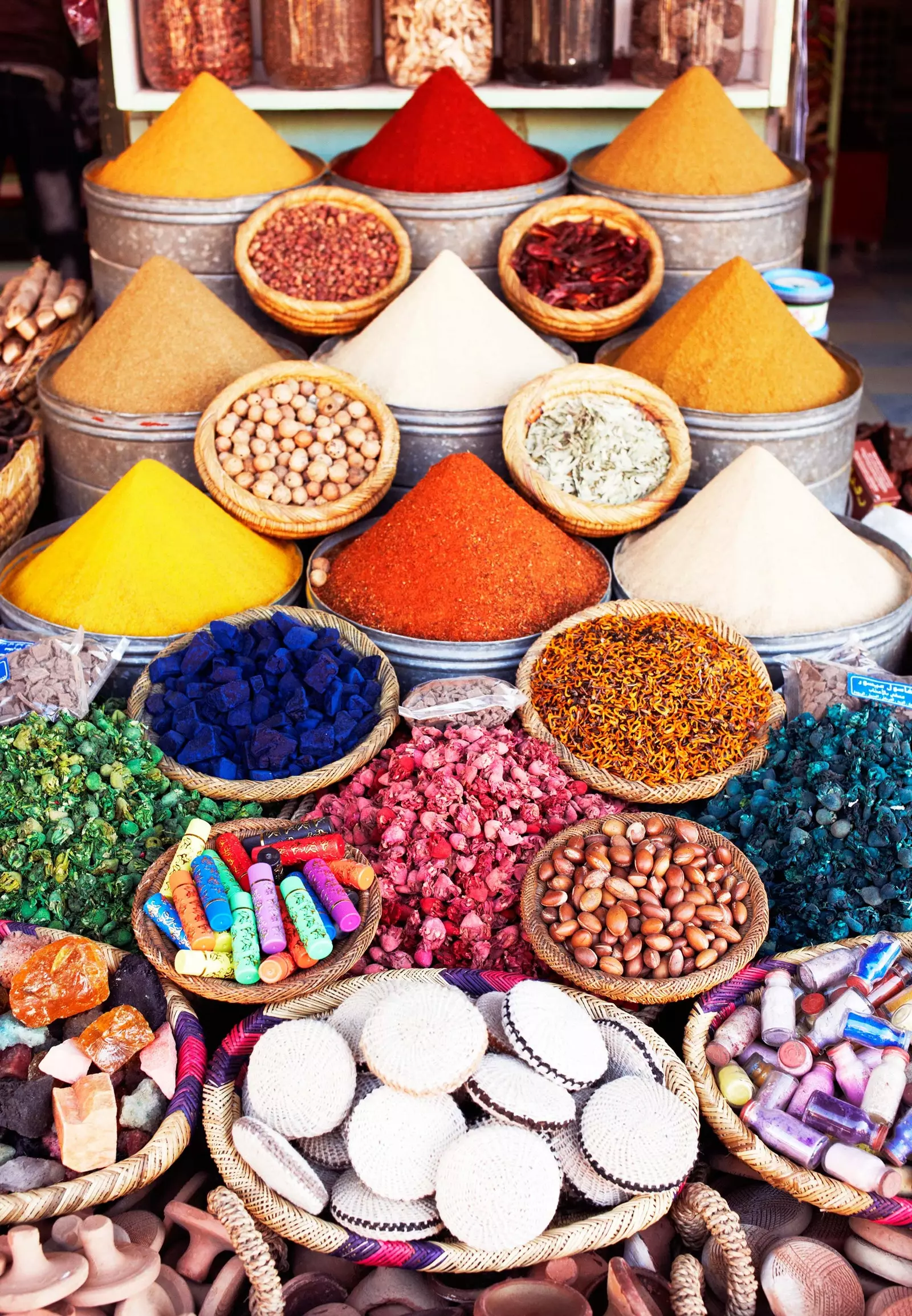
The raw material is pampered
A still incipient movement given the enormous potential of Moroccan gastronomy, but in which very interesting changes are beginning to be glimpsed.
The global concern about the product and how to obtain it have also penetrated Morocco , so it is no longer uncommon to see fruits and vegetables, or even organically sourced and farmed meats, on menus.
Raw materials are cared for more than ever and it's easy to find quality fish and shellfish in the restaurants, oils that compete with their neighbors in the northern Mediterranean and a vegetable garden that has nothing to envy anyone.
Nowadays in Marrakech, if you want, you can eat very well.
GIVE MOHA (81 Rue Dar El Bacha )
Better times seem to have passed for the TV star's restaurant moha fedal . The one that was the designer's mansion Pierre Balmain retains some of its charm – and one can easily imagine the magical nights of music and dancing around the patio's pond, surrounded by greenery and lit only by candlelight – but few surprises are seen in the kitchen, with a menu unoriginal.
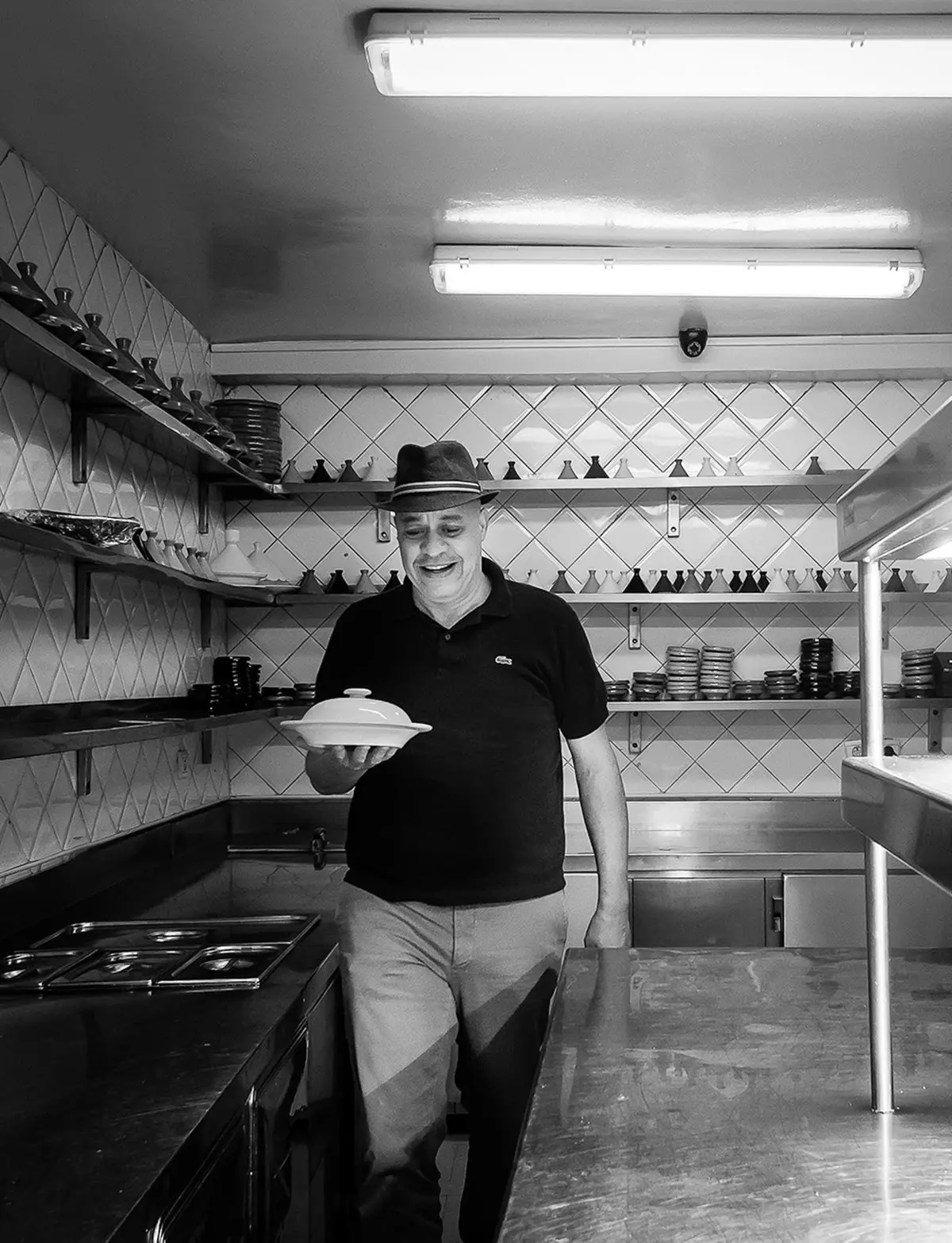
Chef Moha Fedal
However, it is worth mentioning magnificent pigeon pastry, thin, light, crispy and with an abundant sweet and sour filling, as well as a delicious touch of orange blossom water; the selection of briouats (brick pastry filled with meat, cheese and vegetables) complies, but the grilled lamb and merguez will not go down in history.
The service is somewhat awkward but remains friendly, in a decadent and pleasant environment.
** LING LING ** _(Route du Golf Royal) _
The most exotic version of the Hakkasan group is called Ling Ling and they could not have chosen a better location in Marrakech than the spectacular Mandarin Oriental resort, an oasis of luxury far from the city and at the gates of the desert.
Inside, there is a modern space with simple lines and soft lighting, music animated by DJs and cosmopolitan atmosphere.
From the kitchen very well resolved dishes come out, such as the delicious Lamb jiaozis and bamboo dim sum baskets on par with their London “cousins”.
The main ones move between Chinese and Southeast Asian cuisine: good roast duck and correct green papaya salad with prawns.
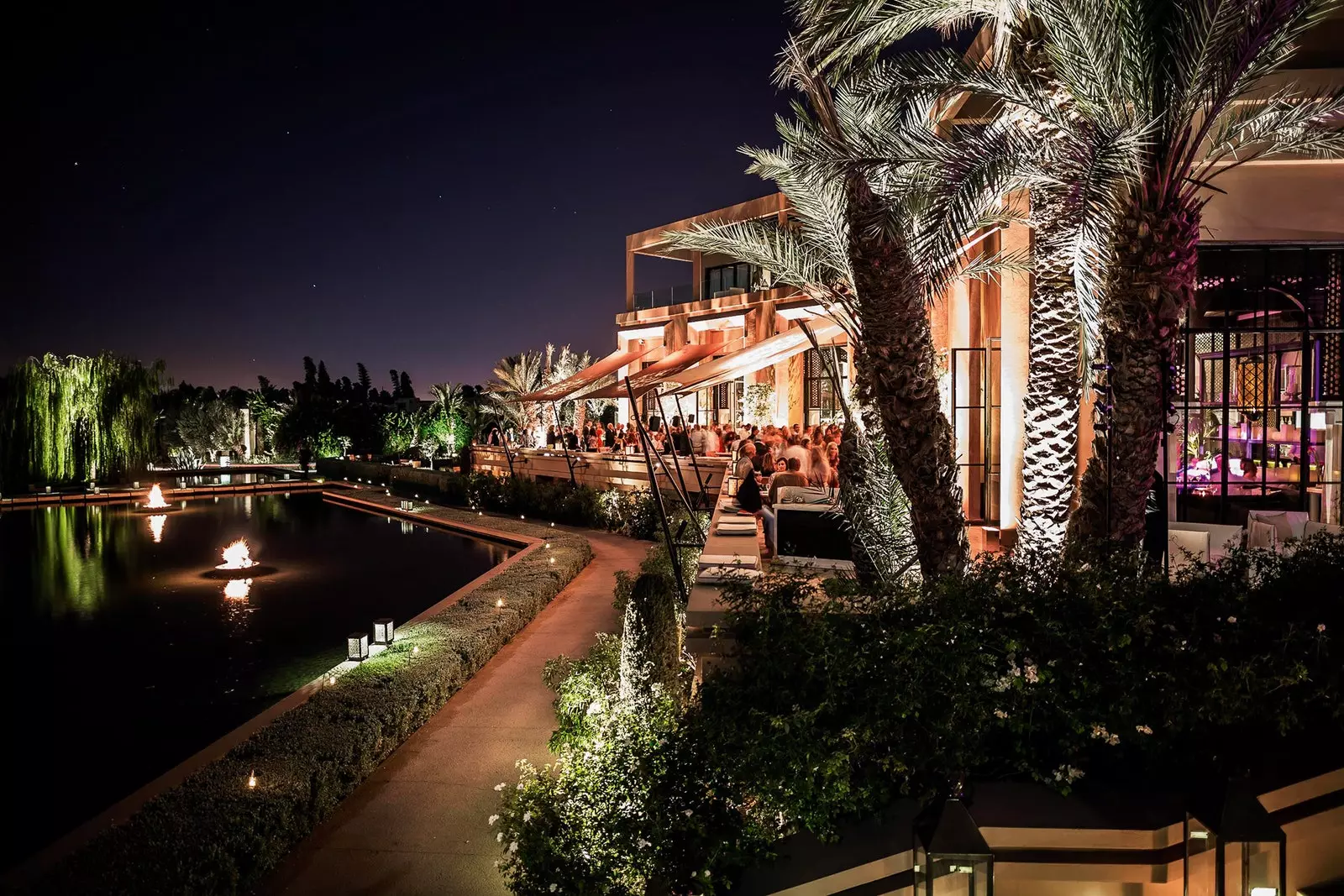
Modern space and cheerful and cosmopolitan atmosphere
Excellent service, a cheerful atmosphere, an interesting wine list –although the prices are frightening at first– and a high-level cocktail bar.
The perfect place to celebrate a special dinner.
LE MAROCAIN _(Avenue Bab Jdid) _
Apart from the undoubted charm that being located in the magnificent gardens of the hotel La Mamounia , Le Marocain is also a good restaurant and a classic to always keep in mind.
Its cuisine alternates modern dishes with other more rustic and traditional ones that are very well prepared and deserve to be ordered on each visit, such as a vegetable couscous, kefta and merguez that is hearty and satisfying.
If you take into account the architecture of the place, the music, those semi-private patios and the atmosphere that is breathed here, the experience earns even more bonus points.
And, of course, it is only fair and necessary to take a stroll through its gardens and have a cocktail – before or after dinner – in the hotel's always splendid Churchill Bar.
** THE COUR DES LIONS ** _(Rue Ibrahim El Mazini) _
in the opulent Palace Es Saadi , a resort that houses the only casino in the city, is located this spectacular restaurant with a central patio that reminds Courtyard of the Lions of the Alhambra.
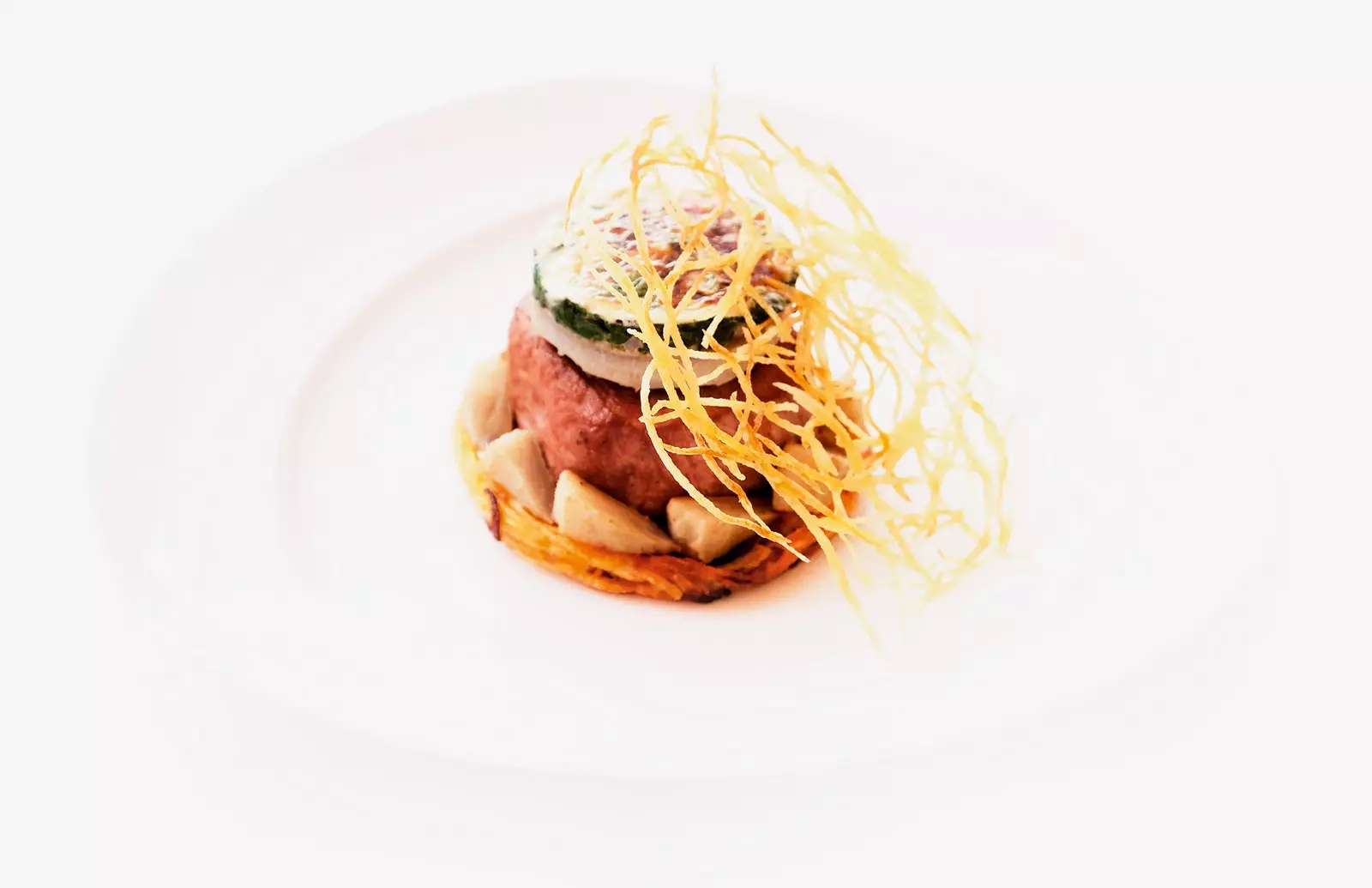
Perfection in detail at the Palace Es Saadi
Nothing has been spared in its architecture and decoration to create an extraordinary space where Fatema Hal, the international star of Moroccan cuisine, could transfer the delicacy and elegance of her Parisian Mansouria to her native country.
On the menu, strong dishes filtered by Hal's subtle sieve and a moderate use of spices. essential and l Madfoun Couscous –light, almost ethereal–, roasted quail imperial with onions, almonds and honey served with a saffron, cinnamon and nouira broth; and a delicious lamb shank with almonds and raisins.
The service and prices are in line with the luxury of the table and the dish. In fact, it is probably the most refined version of Moroccan cuisine.
TERRASSE DES EPICES (15 Souk Cherifia; _Sidi Abdelaziz) _
In the heart of the Marrakech medina, this multi-space venue that brings together a patisserie, an organic and craft shop, and a rooftop restaurant from which fantastic views of the entire city are contemplated.
good atmosphere and a very successful kitchen that combines tradition and modernity with local and international techniques. Service is efficient and friendly, and cocktails are served until sunset.
It's worth trying the Tanjia Marrakesh typical of the city , composed of a shank of lamb or veal cooked on the grill for twelve hours, with pickled lemon, garlic, onion, coriander, parsley and a mixture of up to 32 spices in a clay pot. Absolutely recommended.
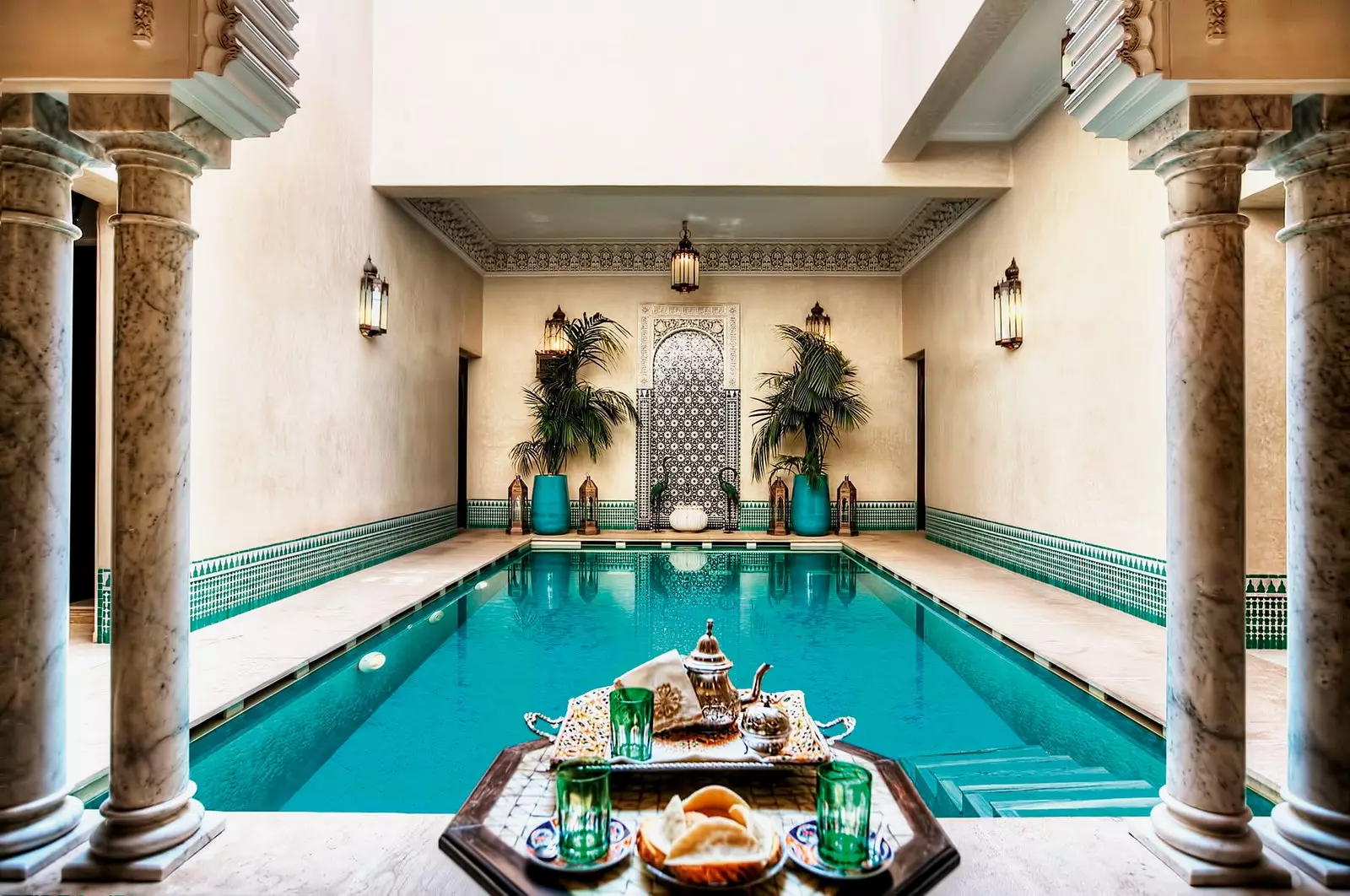
Imagine having tea here and now
RIAD KNIZA _(34 Derb l'Hotel, Bab Doukala) _
The beautiful Riad Kniza It is one of the jewels of the city. An 18th century Moorish mansion completely restored by antiquarian Haj Mohamed Bouskri with the help of traditional materials and the most qualified craftsmen. If each of the rooms is a dream – the royal suite is truly impressive – the restaurant is up to the task, paying extreme attention to the smallest detail.
The menu has several options that should be ordered in advance, and are served in winter in a charming living room with a fireplace. In summer, The patio is the chosen stage and it is usually enlivened with live music.
The cuisine is strictly traditional and very well executed. The Harira (the traditional vegetable, tomato and spice soup) is delicious, as is assortments of briouats, Moroccan salads or chicken patties. But where it really stands out is lamb tajines (stews) with nuts, chicken with olives and pickled lemon or fish and vegetables. If desired, they also have an option that adheres to the vegetarian canons.
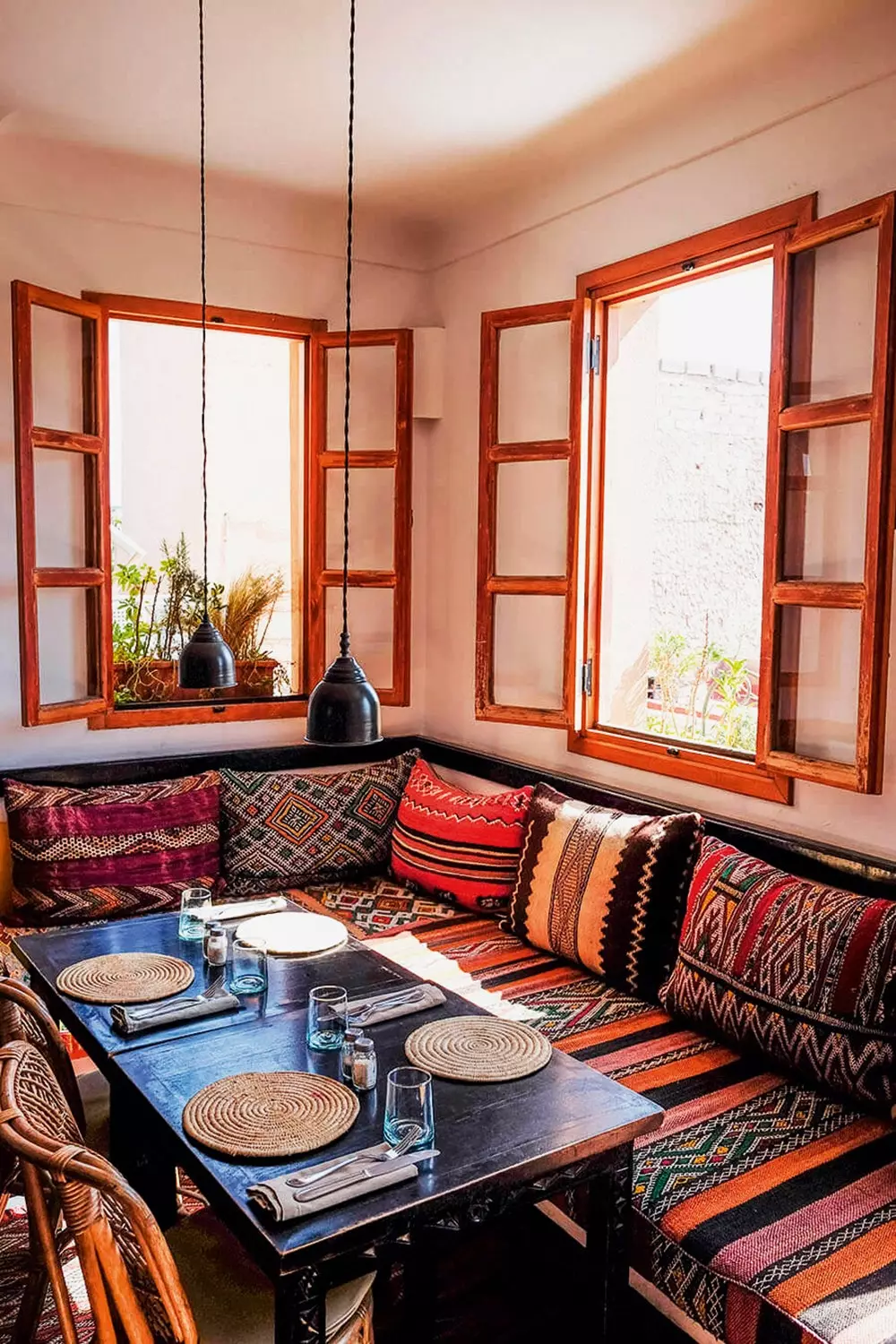
To this corner of Rahba Kedima has come the wave of healthy restaurants and organic products
NOMAD _(1 Derb Aarjane) _
The wave that sweeps the West based on healthy restaurants and organic products has reached Marrakech. And Nomad is the perfect example of this. It could perfectly be in Copenhagen or Brooklyn, but it's on a terrace – with views of the medina – next to the spice market, where Vegetarian dishes, organic products abound and, beware, because alcohol is not served here. Instead, they take juices and infusions.
The cuisine is fresh, healthy, very tasty and makes very good use of vegetables in modern and spicy dishes, like the wonderful Tunisian brick of beef, vegetables, egg and green harissa; fabulous zucchini and feta cupcakes with yoghurt mint sauce and excellent grilled organic lamb chops with vegetables and pickled lemon. Leave room for dessert and try the fantastic orange, cardamom and ginger cake (without flour), as well as its excellent coffee.
THE GRAND CAFE DE LA POSTE _(Angle Boulevard El Mansour Eddahbi) _
The French legacy of Marrakech is evident in this old villa on the Mansour Eddahbi boulevard that dominates the 16th of November square. A colonial-style house with the air of a private club and high ceilings, fans that cool the atmosphere, mirrors with moldings, black and white checkerboard floors and a terrace where the who's who of the city struggle to sit down.
Le Grand Cafe de la Poste is a great brasserie that solves Gallic classics with solvency with a correct steak tartare, a wonderful chef's terrine and a good roasted spicy chicken with Café de Paris sauce. So French that you can start with a Kir and finish with a good Cognac XO on the top floor.
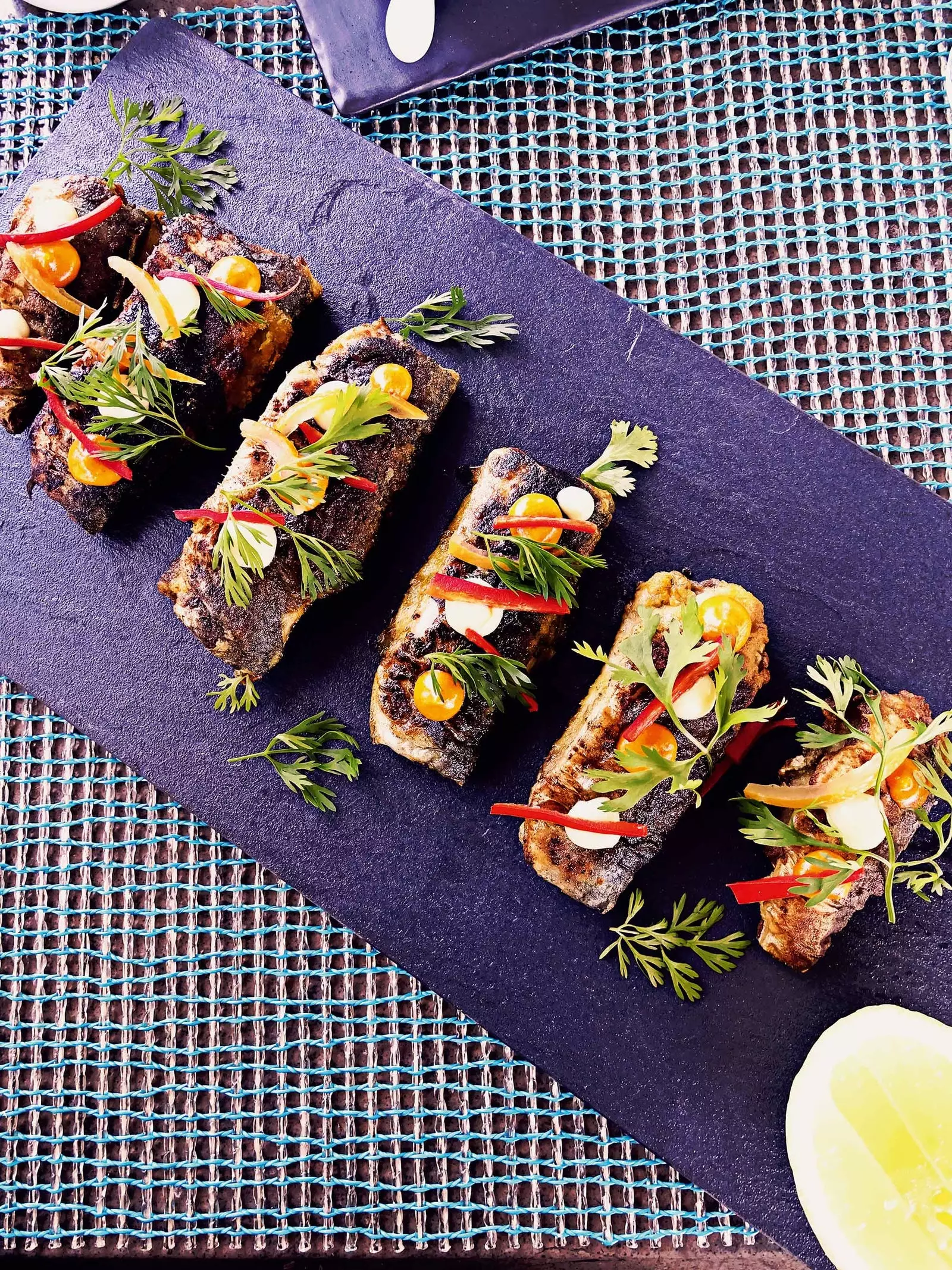
The tasty and colorful cuisine of chef Thierry Papillier
AZERA _(1 Menara Boulevard) _
The tasty and colorful cuisine of chef Thierry Papillier The Four Seasons Resort's casual restaurant, located next to the hotel's sparkling pool, fits like a glove. A relaxed environment between palm and olive trees and an open kitchen equipped with grills and a wood oven that presides over the whole.
On the menu stand out fresh and elegant dishes , such as sardines stuffed with chermoullah or prawns with cumin, carrots and orange. They also make an excellent pizza with vegetables and fresh seafood from the Atlantic coast, such as Essaouira squid with semi-confit tomatoes.
In addition, they are encouraged classics to enjoy by the pool such as salads and sandwiches, cocktails and a interesting offer of local wines that invite you to extend the table in the open air.
_*This article and the attached gallery were published in the number 128 of the Condé Nast Traveler Magazine (May) . Subscribe to the print edition (11 printed issues and digital version for €24.75, by calling 902 53 55 57 or from our website ) and enjoy free access to the digital version of Condé Nast Traveler for iPad. The May issue of Condé Nast Traveler is available at its digital version to enjoy it on your favorite device. _
